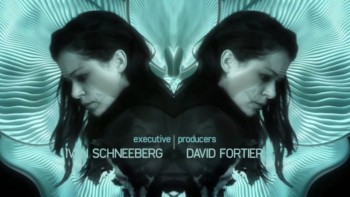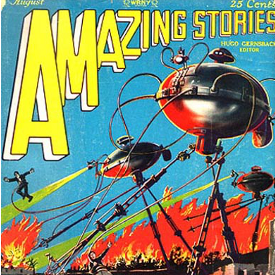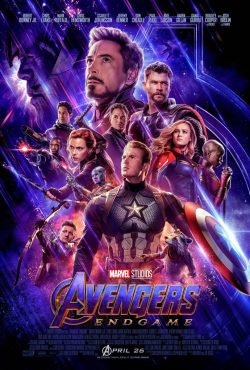 Canadian science fiction thriller Orphan Black, written by Graeme Manson and directed by John Fawcett—now in Season Two—stars the extraordinary multi-talented Tatiana Maslany in multiple roles of herself—really.
Canadian science fiction thriller Orphan Black, written by Graeme Manson and directed by John Fawcett—now in Season Two—stars the extraordinary multi-talented Tatiana Maslany in multiple roles of herself—really.
Shot in and around Toronto, Ontario, the series focuses on Sarah Manning, a fringe-dweller with questionable friends, who assumes the identity of her clone, Elizabeth (Beth) Childs, after witnessing her suicide. In Season 1 alone, seven clones are revealed. Those still alive include suburban housewife Alison, university evolutionary biologist Cosima, corporate mogul Rachel, and crazed sociopath Helena. So far, two more have been revealed in Season 2.
Orphan Black is a slick, sophisticated and edgy exploration of human evolution that raises issues about the moral and ethical implications of bio-engineering and genetic tampering—specifically human cloning, personal identity and intellectual property.
Toronto is filmed brilliantly in a vague every-city pastiche that combines the look of London’s eastside, NYC and northern Europe all in one. Like its characters, the show is both sparsely existentialist and baroque funk. Besides Sarah’s own diverse clones there is foster brother Felix and his various friends or cronies who add significant colour to this film-noir set. Unsavory antagonists not only add intrigue but provide significant texture from sophisticated and subtle to the banal and truly terrifying. And like biology itself—perhaps the true main character here—all the characters are shape-shifters; looking for balance in a shifting world where “normal” keeps chasing itself.
The metaphoric and allegorical nature of science fiction positions itself as a major commentary art form on our nature and evolution. With its emphasis on identity, rights and intellectual property, Orphan Black has positioned itself at the forefront of evolving science fiction.
“While other stories, including Jurassic Park andH.G. Wells’The Island of Doctor Moreau, could certainly be categorized as biopunk science fiction, very few television shows and movies today delve into the idea of biology,” says Isabella Kapur in her article “Clones are People Too: The Science and Science Fiction of BBC America’s Orphan Black” https://www.themarysue.com/orphan-black-science-and-fiction/
Mingling Its Own Nature With It…
Human cloning recently made a media comeback when three different research groups created embryonic stem cells out of embryos cloned from adult cells.
Issues, brought on by GMO foods and medical genetic research, have propelled a major debate in gene patenting. The United States Supreme Court recently ruled against patenting sequences of the human genome in Association for Molecular Pathology Et Al. vs. Myriad Genetics, Inc., Et Al., reports Isabella Kapur in her article “Clones are People Too: The Science and Science Fiction of BBC America’s Orphan Black” https://www.themarysue.com/orphan-black-science-and-fiction/. “Myriad Genetics had patented two genes they had isolated that were identified as genes involved in increased ovarian and breast cancer risks,” said Kapur. “Companies, like Myriad, that spend money to identify nucleotide sequences want to be able to patent those discoveries. However, the patenting allows for monopolies on illness treatments and allows companies to have exclusive access to portions of human DNA. As of June [2013], companies like Myriad Genetics can’t legally copyright portions of DNA they have isolated in the human genome, but they are, according to the Supreme Court, allowed to patent synthetically created sequences of complementary DNA.”
In Orphan Black, the ownership of the clones’ genomes by The Dyad Institute would be lawful if all the clones’ DNA was entirely synthetically made. The company would also have exclusive rights to study the clones’ genome, effectively placing the clone Cosima under copyright infringement if she decided to study and apply her research (on herself) outside of the Dyad Institute. If the clones were synthetic, like the DNA created by scientist Dr. Craig Venter, then the Dyad Institute would be in a unique situation with regards to ethics and newly emerging considerations of human rights yet to be determined. For instance, how much of the clones really belong to company that made them? What even constitutes a person?
The series unravels a frightening panoply of stakeholders in this biological transhumanist game, spanning from the ultra-sophisticated to the deranged fanatic. Proletheans are religious extremists, who seek to systematically eliminate clones as “abominations” against the natural order of things. Pastor Henrick, a Waco-style cult “prophet” who quotes Einstein, conducts Mengele-style “breeding” experiments to recast humanity in his version of “perfection”. The Dyad Institute, a biotech corporation with arcane connections to invisible powers and eugenics, patented the clones as theirs to do with as they please—which might be anything. The Neolutionists, a transhumanist movement pursuing “self-directed evolution” evokes social Darwinism and the Übermensch. All bring to mind the early American eugenics programs that inspired the fascist sonderweg and Hitler’s aggressive application of eugenics in the Holocaust. All are frightening.
For instance, why were the clones made? Who exactly is the Dyad Institute and who is behind them? In the latest episode (2.8: Variable and Full of Perturbation), we discover that not only are the clones female prototypes (of what?) but that they were purposefully created to be sterile.
Conditions of Existence…From Perfect Human to Perfect Society
Since Mary Shelley’s Frankenstein in 1818—often regarded as the first science fiction story written—the “mad scientist” has endured and evolved as an archetype in literature. Literary works from science fiction to thriller, mystery, action adventure and even literary fiction have often portrayed scientists as sociopathic, and so consumed with their experiments that they are either oblivious to or outright disregard their social consequence. Most stereotypes and cliché derive from a realizable archetype based on social experience. In reality, ambition and political motive are dangerous bedfellows in the pursuit of science (to use another cliché). A recent book jacket introduction to Mary Shelley’s Frankenstein, shares the following examples: “the brains behind the nuclear arms race, scientists who create super bacteria, and laboratories that experiment with artificial black holes. But most notably is the area of science devoted to gene manipulation, both in genetically modified foods and human cloning. Frankenstein has much to teach us in a world where we constantly test the limits of science and human ambition.”
Where do we draw the line in our tightrope walk across the sea of chaos to find the Holy Grail? When does a Transhumanist’s individual expression of “transcendence” become a movement toward the Singularity? When does a singular powerful thought encompass an entire society?
The political ambitions that wish to use science to “enhance” humanity, based on someone’s idea of “perfect” carry great social implications. Enter the pseudoscience of eugenics, a concept as old as Plato, and one that has haunted humanity since the biblical portrayal of Adam and Eve. Simply put, eugenics uses science and/or breeding techniques to produce individuals with preferred or “better” characteristics. Coined in 1883 by Francis Galton, cousin of Charles Darwin, eugenic strategies flourished in the USA in the early 20th Century when thousands of people underwent forced sterilization. Ultimately, these same principles inspired the Nazis to exterminate people with disabilities and those considered to have “lessor” ethnic or philosophical backgrounds.
“Perhaps more than any other science, biology has consistently been employed as an accomplice to moral claims because it has tremendous social utility in translating scientific findings into political imperatives,” says Cosima Herter, science consultant for Orphan Black. “Deeply embedded in the public consciousness is the hope that social problems can be solved with ‘scientific panaceas’,” Herter adds. “…Science can as easily act as an ally to existing institutions and justify pernicious prejudices – racism, sexism, homophobia, and class disparity to name a few – as it can produce wondrous, beautiful, and beneficial fruits in the service of a better world.”
What is perfect and how do we measure it? What is the risk of even suggesting a recipe for such a thing? A perfect society? Isn’t a Utopia an oxymoron of unresolvable paradox? Science fiction literature has given us many visions of where so-called utopias may descend (e.g., Brave New World, 1984, Fahrenheit 451, A Stranger in a Strange Land, The Handmaid’s Tale, The Matrix, The Hunger Games, Elysium, Divergent, Clockwork Orange, Delirium, Always Coming Home, and so many more). The very act of being an individual provides complexity and diversity that promotes stability in change. Stable chaos.
Perhaps, what Orphan Black demonstrates the best is that even clones—who are exactly the same genetically—can differ significantly, given free reign in a diverse environment.
What Orphan Black does exceptionally well is ask those hard questions. OK. It’s not asking the questions so much as presenting the “then” scenario to some pretty important “what if” premises. It’s doing what all good art—versus polemic—does: it’s providing the seeds for viewers to engage in intelligent conversation on emerging social issues via Twitter, Facebook, blogs and other social media.
Join in.










